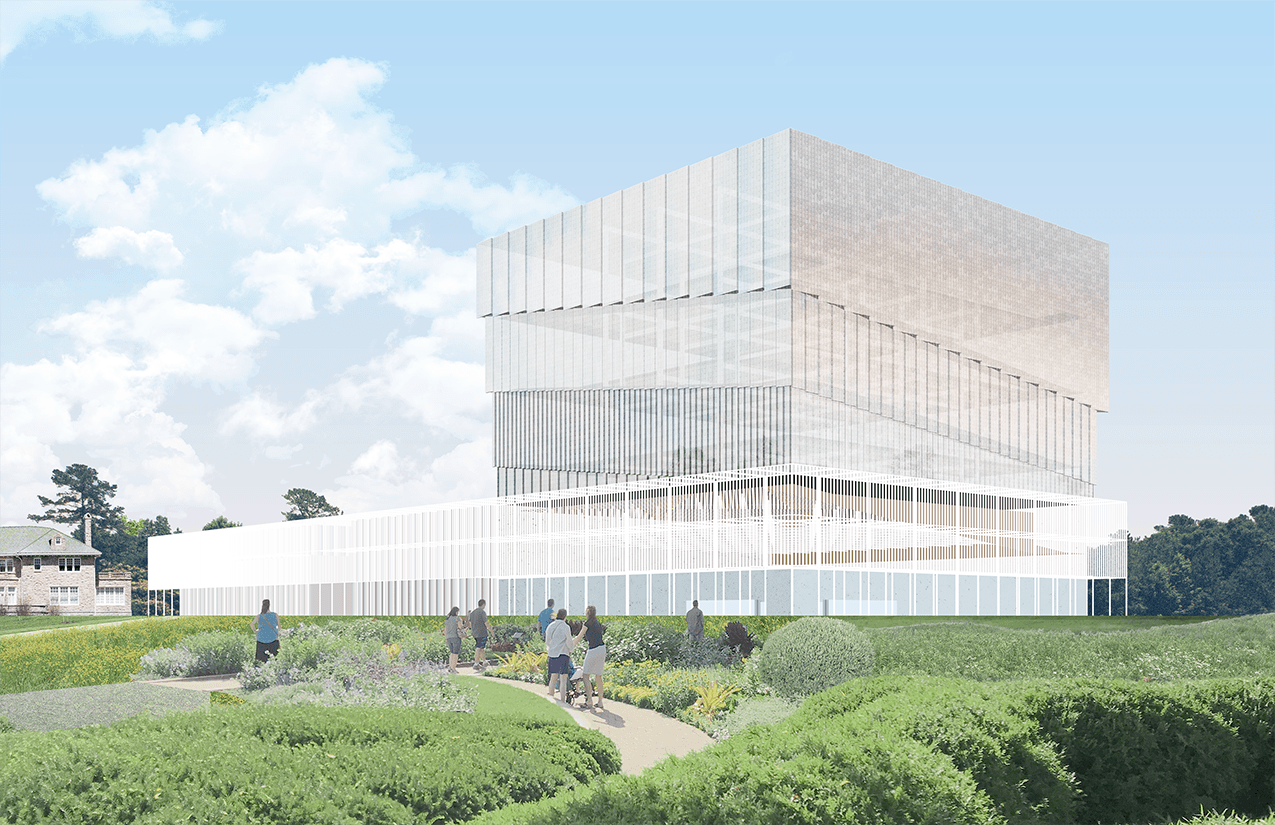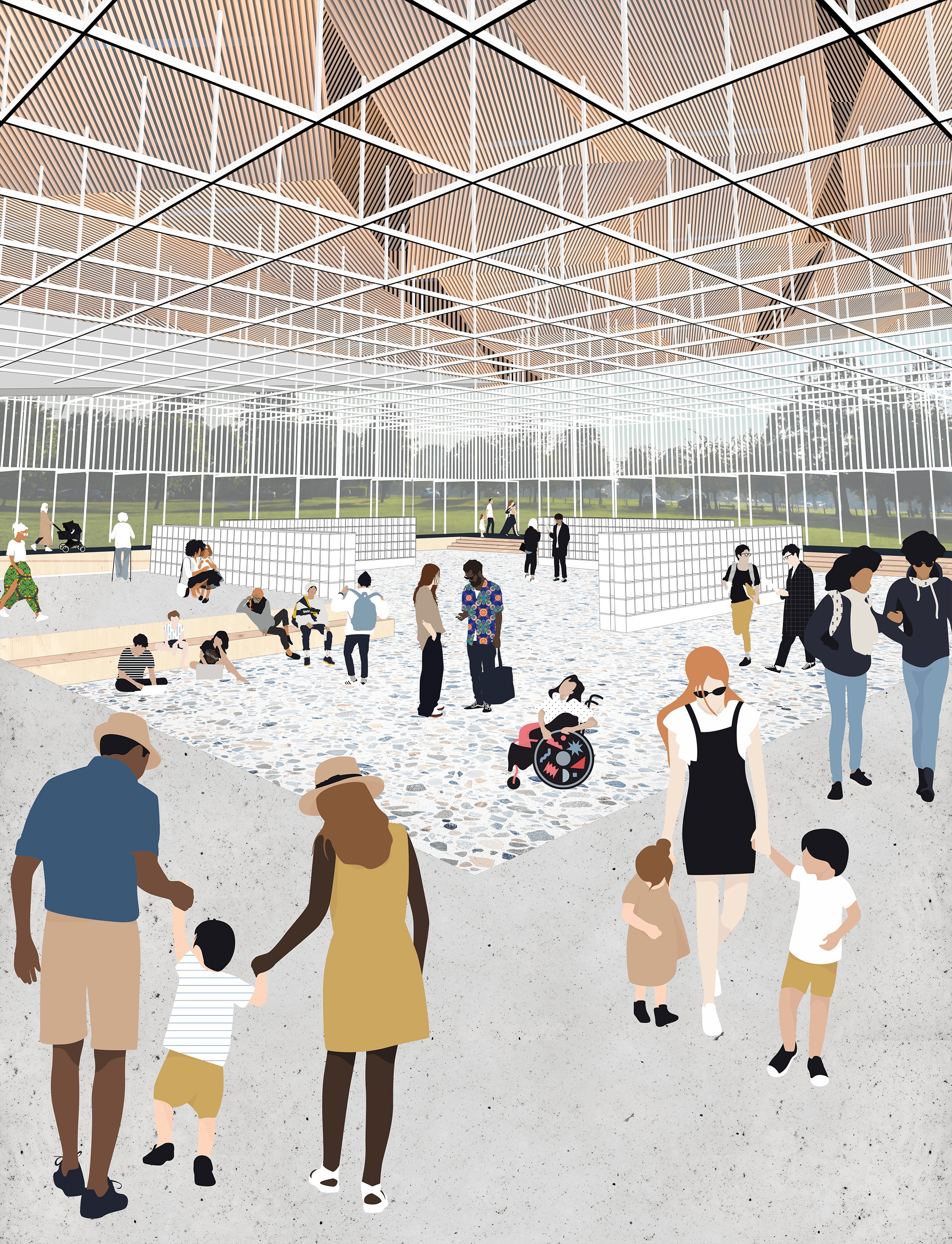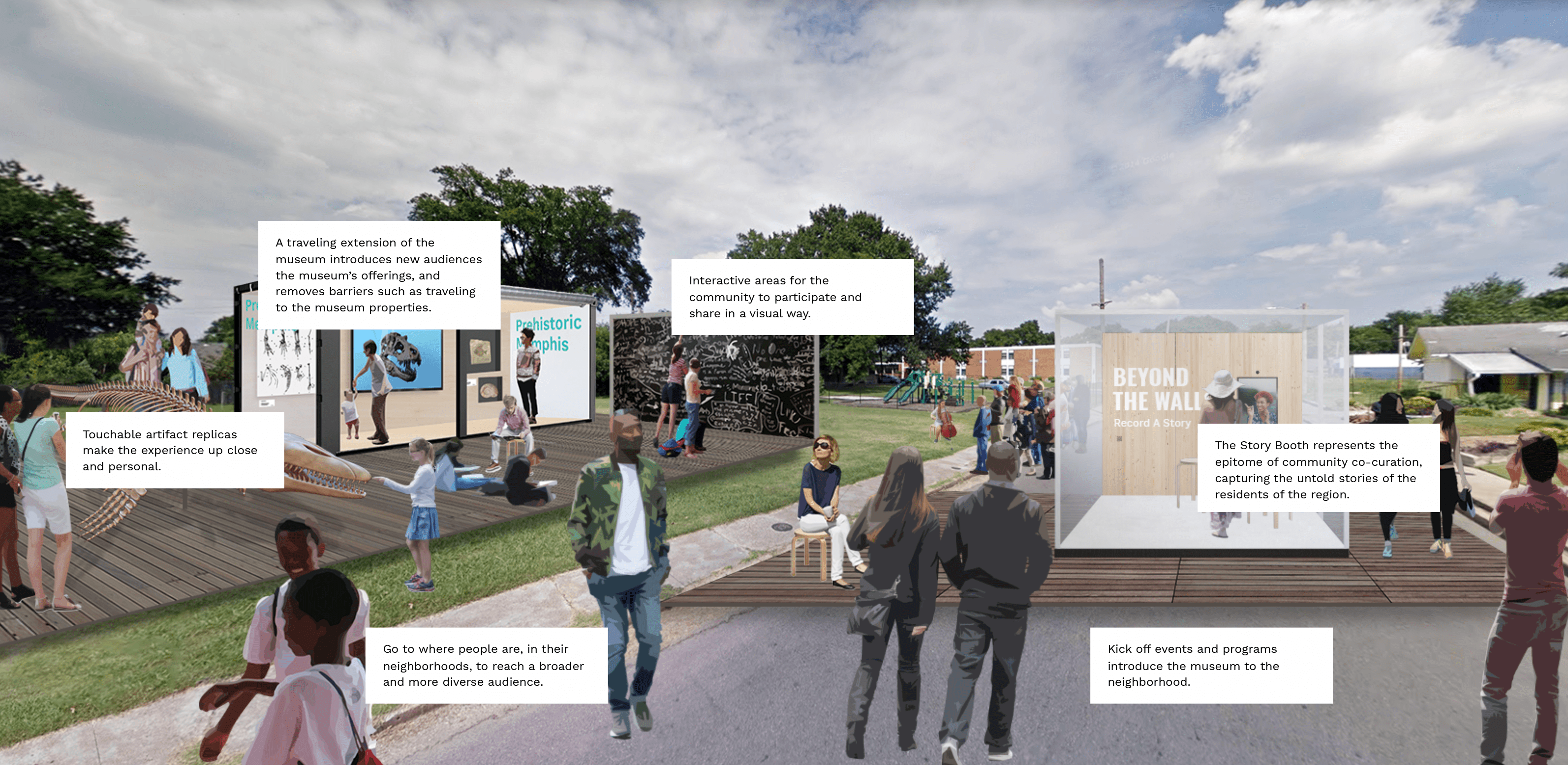MEMPHIS MUSEUMS
Reimagining the museum as a space for belonging
IA Collaborative
Project Director
IA Collaborative
Project Director
CHALLENGE
Create a vision for missional transformation around exhibits, programming, and outreach that builds a new relationship with audience
The Memphis Museums is a semi-public institution comprising multiple units and anchored by the Pink Palace Museum, Memphis’s cultural and natural history of record. After decades of stagnation, whitewashed storytelling, and waning donations, the board embarked on a renewal project to galvanize its passionate staff and educators, stakeholders, and membership around a vision to become “the heartbeat and soul of Memphis.”
Create a vision for missional transformation around exhibits, programming, and outreach that builds a new relationship with audience
The Memphis Museums is a semi-public institution comprising multiple units and anchored by the Pink Palace Museum, Memphis’s cultural and natural history of record. After decades of stagnation, whitewashed storytelling, and waning donations, the board embarked on a renewal project to galvanize its passionate staff and educators, stakeholders, and membership around a vision to become “the heartbeat and soul of Memphis.”
OUTCOME
To create a vision for institutional transformation that centered on audience, we explored how Memphians connect to place, form and sustain community, and their sense of belonging through a new research method called environmental ethnography. We moved to Memphis understand how Memphians think of themselves and their place in the world. Learning from everyday champions, civic leaders, and folks along the way we developed a model for the relationship between the museum and its many audiences. These insights translated to concepts for exhibits, programming, and outreach that covered everything from participatory curation to a new building, and provided a vision for how all units of the Memphis Museum—the nature center, paleontology camp, historic houses, as well as the Pink Palace—work together to build dynamic connections to audience.
To create a vision for institutional transformation that centered on audience, we explored how Memphians connect to place, form and sustain community, and their sense of belonging through a new research method called environmental ethnography. We moved to Memphis understand how Memphians think of themselves and their place in the world. Learning from everyday champions, civic leaders, and folks along the way we developed a model for the relationship between the museum and its many audiences. These insights translated to concepts for exhibits, programming, and outreach that covered everything from participatory curation to a new building, and provided a vision for how all units of the Memphis Museum—the nature center, paleontology camp, historic houses, as well as the Pink Palace—work together to build dynamic connections to audience.




